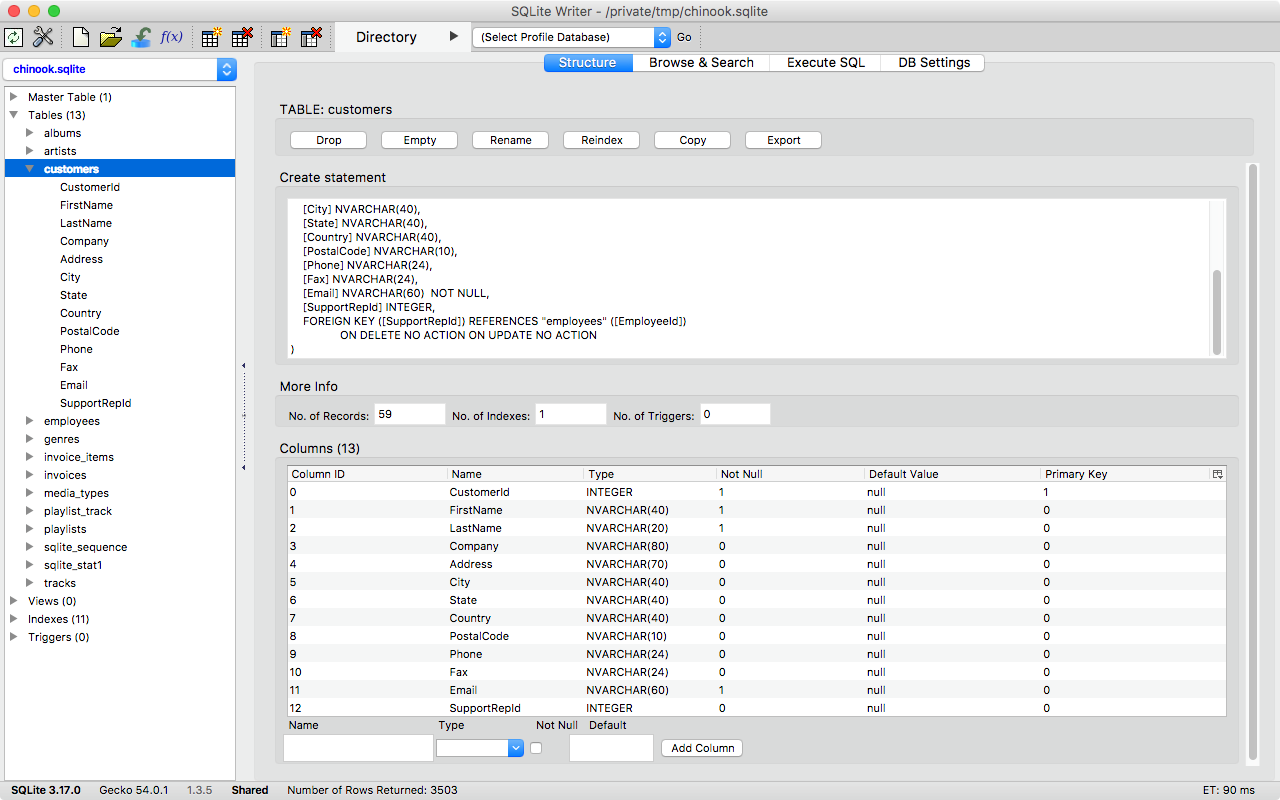
The goal of SQLite was to create a solution that didn't require a database management solution or have the need for a database administrator.
#ACCESS SQLITE DATABASE SOFTWARE#
Software developer Dwayne Richard Hipp, while working for General Dynamics, wrote SQLite in early 2000 while on contract with the US Navy. As a cross-platform file format, you are able to copy between 32-bit and 64-bit storage systems. A disk file contains a comprehensive SQL database complete with multiple tables, views and triggers. Instead, it reads and writes right on disk files. SQLite is a unique SQL solution because it doesn't require a separate server process. In fact, SQLite is the world's most widely used database engine. SQLite has been built into every mobile device and almost every computer.
#ACCESS SQLITE DATABASE CODE#
SQLite's code is available within public domain making it free for use for every private or commercial purpose. It offers its users a high-performance, very dependable SQL database engine. SQLite is a lightweight database management solution. To view a complete list of sqlite3 commands, type.Replace table with the name of the table that you want to view: To view the structure of a table, type the following command at the sqlite> prompt.

For SQLite show tables, type the following command at the sqlite> prompt:.If the database file already exists, SQLite opens the database contained in the file.Īfter you access a database, you can use regular SQL statements to run queries, create tables, insert data, and more. If the database file does not exist, SQLite creates it. create a file commands.The database filename can be anything you want.The shell will execute the file of commands and then exit. The database to connect to and provide a file of the commands that you want to execute. The shell has one distinct advantage over DB Browser you can run the shell program and in the call to the program provide a parameter indicating Most people prefer to work with nice point and click interfaces, so why would you want to use the shell rather than the DB Browser application? You could use it as a replacement in most cases. To configure how it works it could be considered as powerful as the DB Browser application. We run the program, connect to a database, run a query and save the output.īecause the shell will accept any valid SQL statements as well as have numerous ‘dot’ commands of it own So far we have used the shell in much the same way as we might have used the DB Browser application. Notice the use of quotes in the rows where the value of the data item themselves contain quotes in this case single quotes. The contents of which contains the expected output from the query. Yes you can have a file called “my.filename” if you want. The file will be created if needed or it will overwrite an already existing file, so exercise care. To direct the output to a file of my choice. quit which will end the SQLIte shell program. One you will have to use at some point is. There are in fact a large number of “dot” commands and they are all explained in the official SQLite documentation here. We can make the changes we want by using further “dot” commands. Notice that the NULL values in columns 6 and 8 are just left empty, two consequetive delimiters, just as they are in a csv file. There are some other changes to the output format that we might want to change as well.įor example change the field seperator from the default “|” to a comma and provide column headers. It is however more likely that not only are the results from the query somewhat larger,īut also we would prefer to save the output to a file for later use. If we just wanted to look at a small selection of data this

The output from the query is displayed on the screen. Although easy to forget, it generally works to your advantage as it allows you to split a long query command across lines as you did in the DB Browser application. This is how the shell knows that You think the statement is complete. You must always terminate your select command with a “ ”.

Once the database is opened you can run queries by typing directly in the shell.sqlite suffix, otherwise a new database simply called SQL_SAFI would be created


 0 kommentar(er)
0 kommentar(er)
